- It’s what we do – adventure motorbike magazine
- BMW GS Safari Enduro = adventure motorbikes, news, reviews, publication
- BMW F850GS Rallye X
- Strap Yourself In
- The Dempster
- TomTom Rider 450
- Read Between The Lines
- Locked Gates – motorbike magazine, australian motorcycle publication
- Ural Adventure Ride 2018
- Sri Lanka – adventure motorbike tour, motorcycle magazine
- The Best Job In The World = australian motorbike magazine
- Wet Arses
- Yamaha Tracer 900
- Congregation 2018
- We Didn’t Have PLBs In Those Days
- Sahara To Sunraysia = australian motorbike riding tours news event magazine
- Managing Risk with Miles Davis
- Thinking Big? Start Small with Andy Strapz
- A Precautionary Tale from Karen Ramsay
- Checkout
- Fit out – australian adventure motorbike riding
The folks at DSMRA had a few thoughts about Alex Kelly’s Locked Gates article in issue #29.
Alex Kelly’s article in issue #29 of Adventure Rider Magazine raised a hot topic we’re sure we can all relate to: locked gates.As our sports’ adopted title suggests, our interests extend beyond just riding for the pure enjoyment of it. We want to ‘go some-where’, which is what being adventurous is all about, and ideally join up a few ‘somewheres’ into a larger loop.Dead ends and retracing our steps don’t fit that bill.
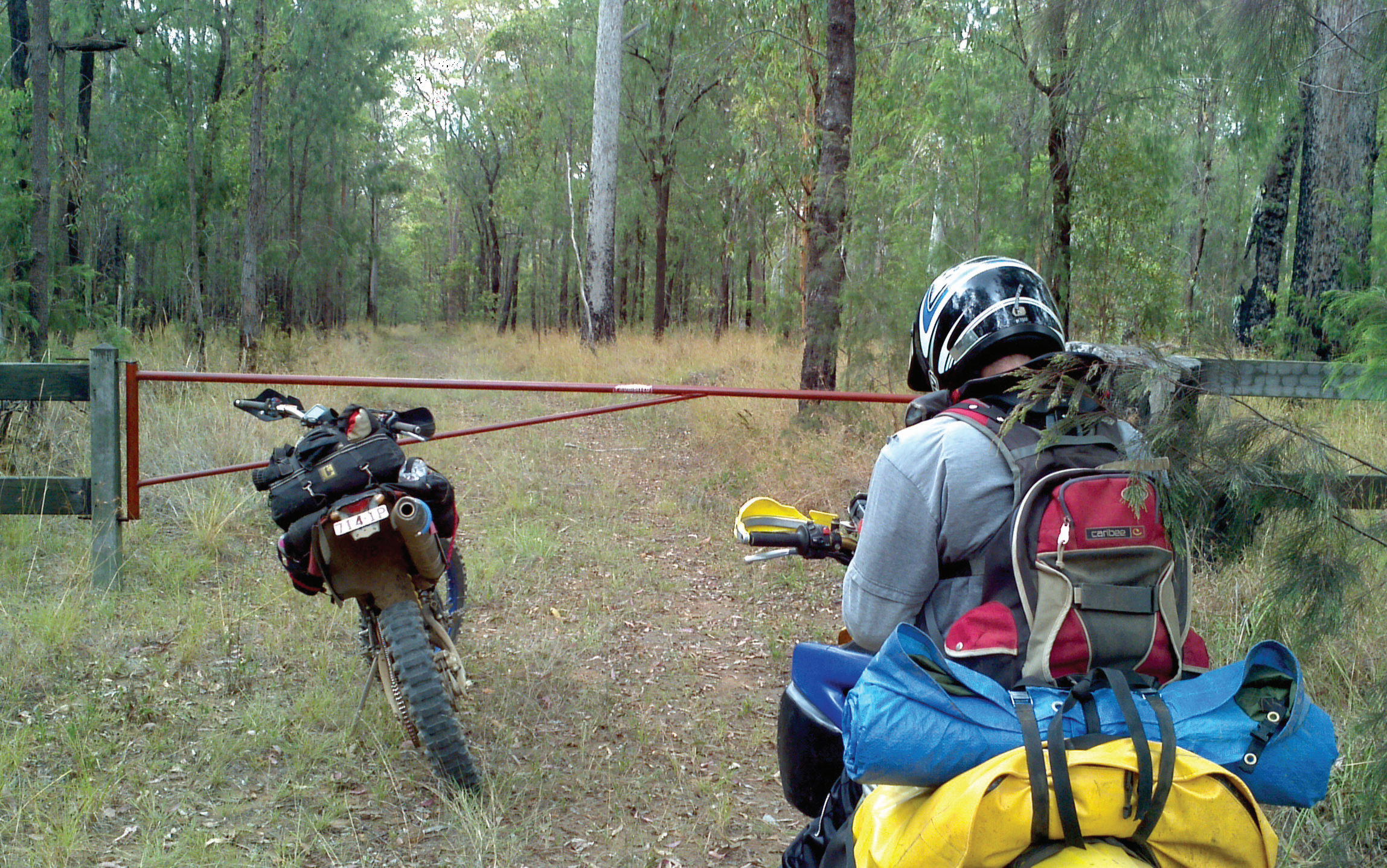 This National Parks gate in central Queensland is generally left unlocked. It’s probably there to allow traffic control during hazard reduction.
This National Parks gate in central Queensland is generally left unlocked. It’s probably there to allow traffic control during hazard reduction.
Who’s locking the gates and why?
There are only two basic land tenures, ‘public’ and ‘private’. Public land includes National Parks, State forests, crown land and myriad other names for land controlled by the government. Private land is owned by individuals, companies or other non-government organisations. It gets a bit foggier when government land is leased by a private entity like a railway, and almost pea-soupish when a private-land owner leases a road easement. Each State also has its own differences in legislation.
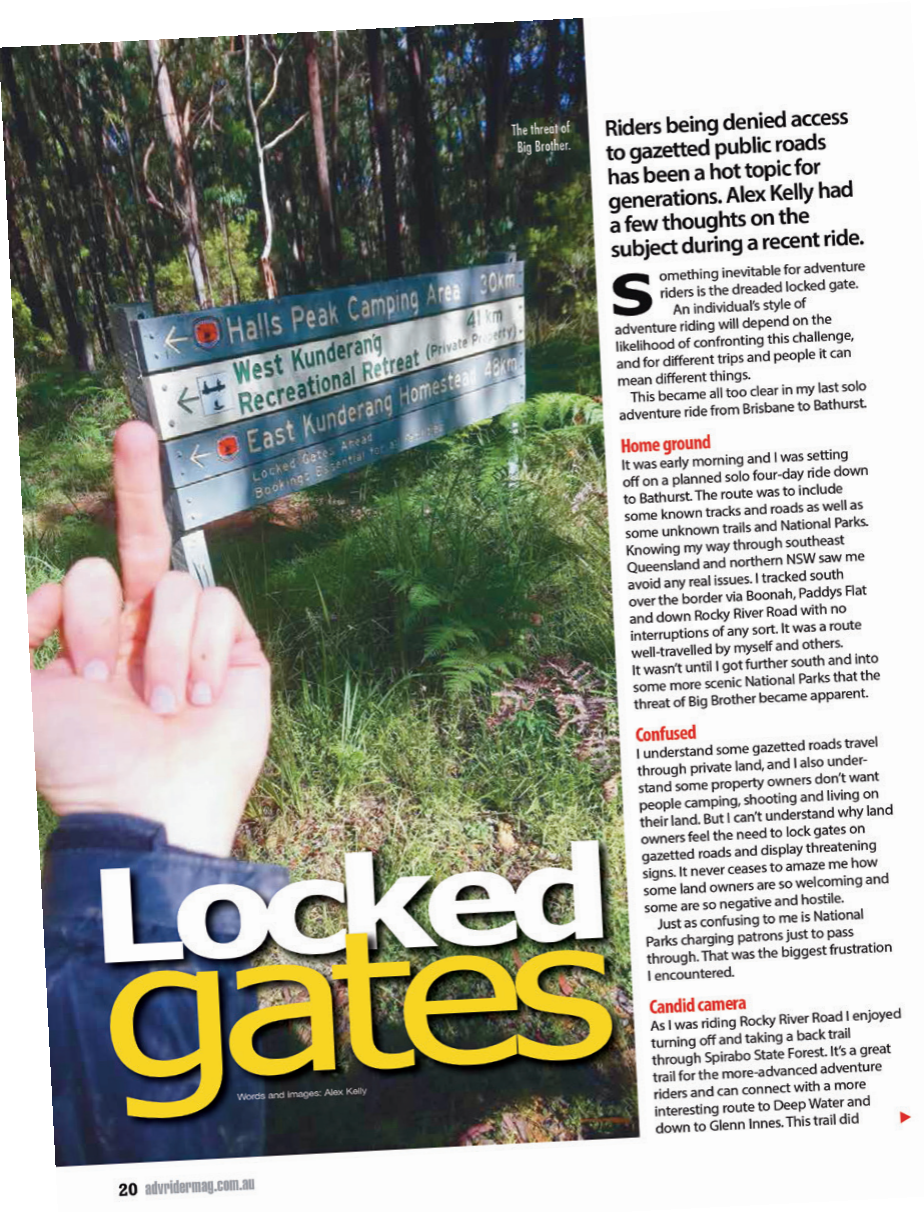 Alex Kelly shared his frustration at locked gates and restricted access in issue #29.
Alex Kelly shared his frustration at locked gates and restricted access in issue #29.
Private gates
Private landowners lock gates on their property boundaries to keep people out, pure and simple.
Although, whether the gate is on their property boundary can be an area of debate. If it’s a private road (even if it’s a continuation of a public road) they are quite within their rights. It’s no different to you and I locking a gate where our driveway meets the street.
Some of the apparently grey areas are where a designated road easement marked on a shire map may never have eventuated into a road, or the road may now only service one property and be of limited public use. If the adjacent property owner has applied for a lease over the easement then they become the tenant and the land effectively becomes private. Again, it’s no different to renting public housing.
The government may own it but the tenant can lock the doors.
The illegal example is where a gate may get erected on a public road and locked by the adjacent property owner simply to keep the public out. As the urban sprawl encroaches on the bush and more and more lifestylers want their piece of wilderness, the tension escalates.
To add to the confusion, just because a road is marked on a map does not mean it is a public thoroughfare. A good example is regional fire-service maps.
They’re a very good adventure-riding resource, but the roads shown are all the roads a fire truck can traverse, a lot of which could be private.
Trespassing on private property is illegal, but what really annoys landowners is the actions of a very small minority, such as leaving gates open, track damage, riding off-track up hills, hunting without permission, dumping rubbish, excessive noise and scaring stock. One of our members has had a long-term relationship with a neighbour whose property links his place directly into a network of National Parks tracks.
Recently the gates closed because some idiot dumped asbestos on the property.
Another example is Martindale Trail below Denman in NSW. It was closed after a complaint by the adjacent landowner who alleged some trailbike riders chased steers and scared 12 over a cliff to their death.
 Why do we see these gates being locked?
Why do we see these gates being locked?
Public gates
Government departments close areas for the same reasons. Of all public-land tenures, National Parks is the most prominent gate locker. National Parks has very limited manpower for the area it has to manage, and this is not helped by successive governments pandering to the urban armchair green voters at election time, and extending the park areas further without equivalent additional management resources.
The result is management by exclusion: if the resources aren’t available to maintain a track, simply close it or restrict access.
So in Alex’s case, the Halls Peak camping area in Oxley Rivers National Park is accessed by a locked gate, for which you can get a key from NPWS in Armidale. The very friendly and helpful staff at NPWS Armidale And Walcha explained the situation in a phone call.
The reason this particular area is locked is because it’s a very rough, steep track and also very remote. To prevent ill-prepared visitors getting stuck and requiring rescue, the permit-and-key system is to ensure vehicles going in there are suitable (high-clearance 4WDs, no trailers) and the land managers know who is in there. Being a declared wilderness area, it also has a restriction on how many vehicles can be in there (restricted to six at any one time).
This system has been in place for over a decade, so it’s nothing recent and is obviously working and sustainable.
At least it’s still accessible and not permanently locked.
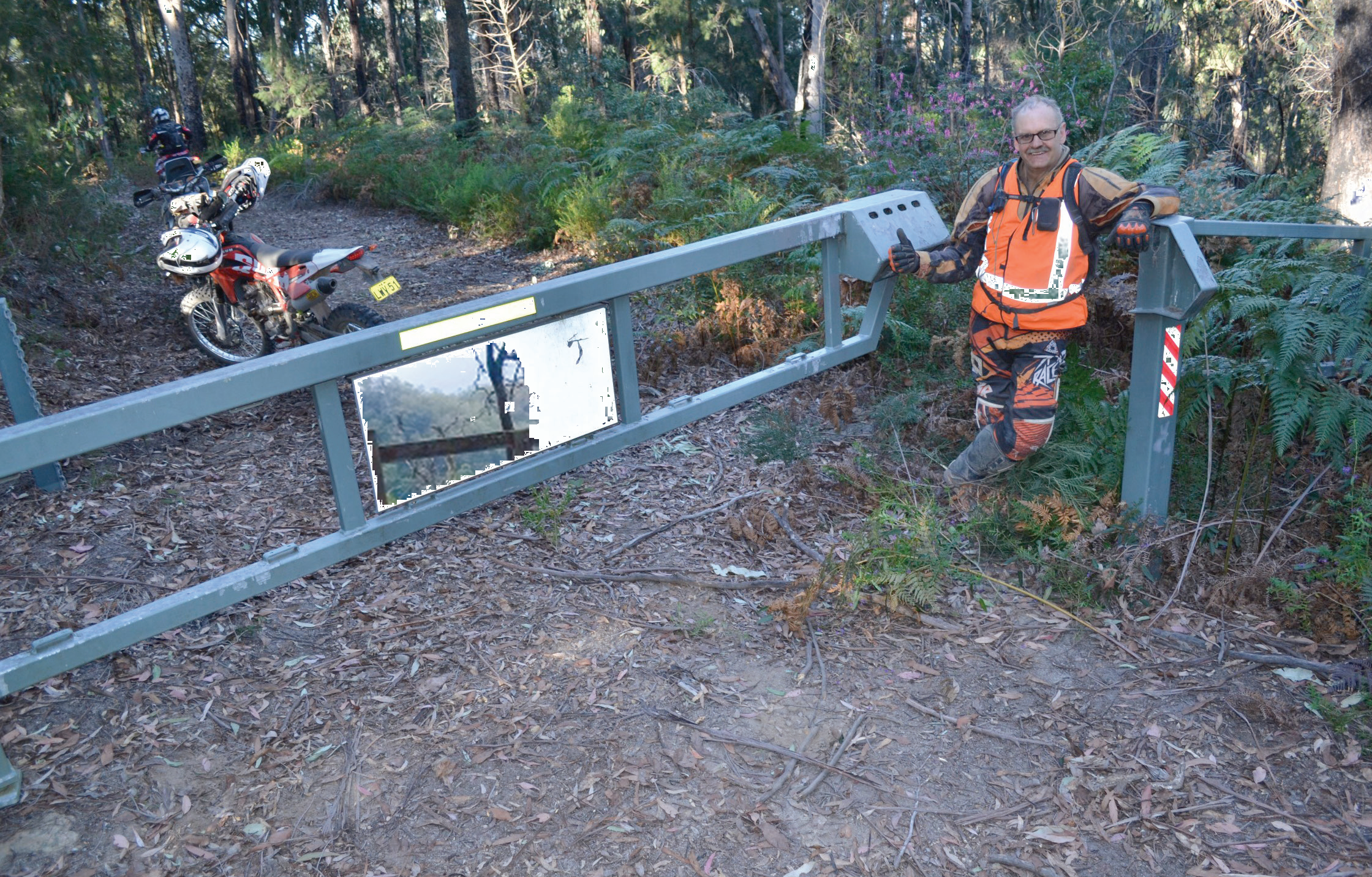 DSMRA president Tim Clarke at the entry to Martindale Trail in NSW. The DSMRA has gained exclusive access for an annual trail ride through negotiation park with managers and land owners.
DSMRA president Tim Clarke at the entry to Martindale Trail in NSW. The DSMRA has gained exclusive access for an annual trail ride through negotiation park with managers and land owners.
What can you do?
So, yes, there are a lot of gates locked by angry individuals (sometimes illegally) and by under-resourced government departments. But a lot of tracks are closed for good reason. Before getting angry and ranting to the converted, take the polite approach and ask why. A few phone calls to government departments can explain the reasons why some areas are locked up, and a lot of landowners will lower the shotgun muzzle and calm down if you take off your helmet and explain who you are and why you would like to continue through their gate.
Reporting people doing the wrong thing and confronting unregistered and noisy riders will all add to the cause.
Join a club that promotes responsible riding. Nothing will improve while we are fragmented individuals.
Do something positive for your local community. DSMRA Sydney carried out two rubbish clean ups in Meryla State Forest, collecting over seven tonnes of illegally dumped rubbish, which resulted in a heap of kudos from the local area and forest rangers.
The turning tide
For a positive example of areas completely off limits being opened up to responsible user groups, the Sydney branch of the DSMRA has negotiated access to Martindale Trail and Womerah Range Trail for an annual ride over the past few years. Approvals had to be gained from local landowners to pass through their properties on the park’s boundaries, and then those approvals taken to National Parks to meet their requirements. The responsible reputation of the DSMRA and the insurances the organisation carries enable all landowners involved to have the confidence to allow access.
The Dual Sport Motorcycle Rider’s Association
The DSMRA was founded in 1995 to represent riders and maintain access to riding areas. It has over 1000 members and is run by volunteers. Over the past 23 years the political involvement has varied, but the current committee recognises that a greater presence is necessary in this area. Funding for more concentrated efforts on land-access issues is a focus this year, along with a major update of the clubs’ policies and procedures. For more information visit www.dsmra.asn.au.

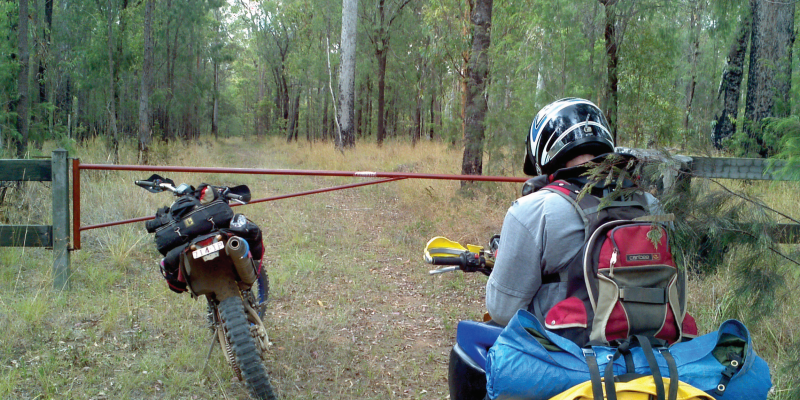





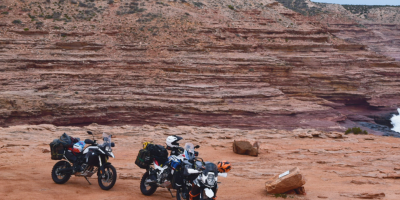






Comments